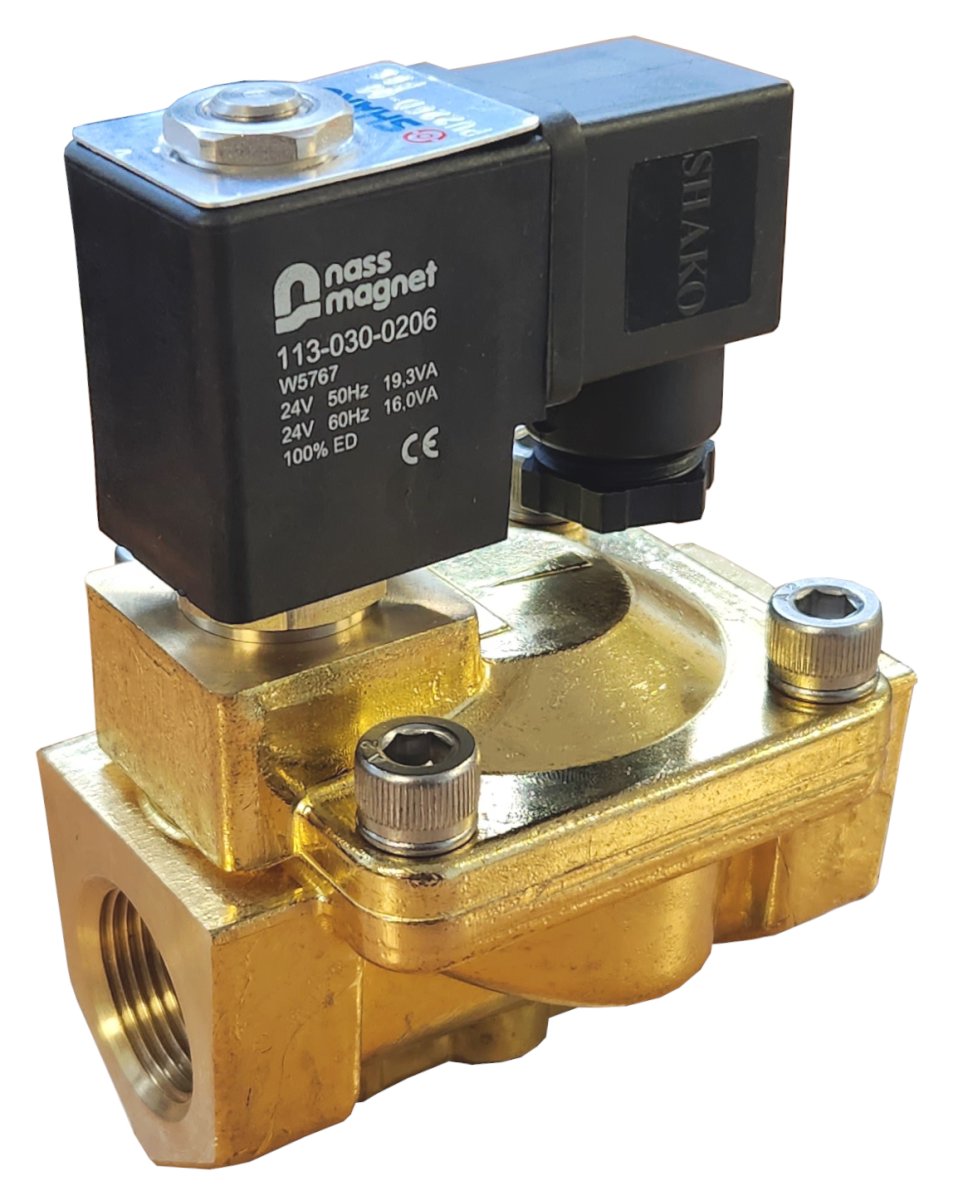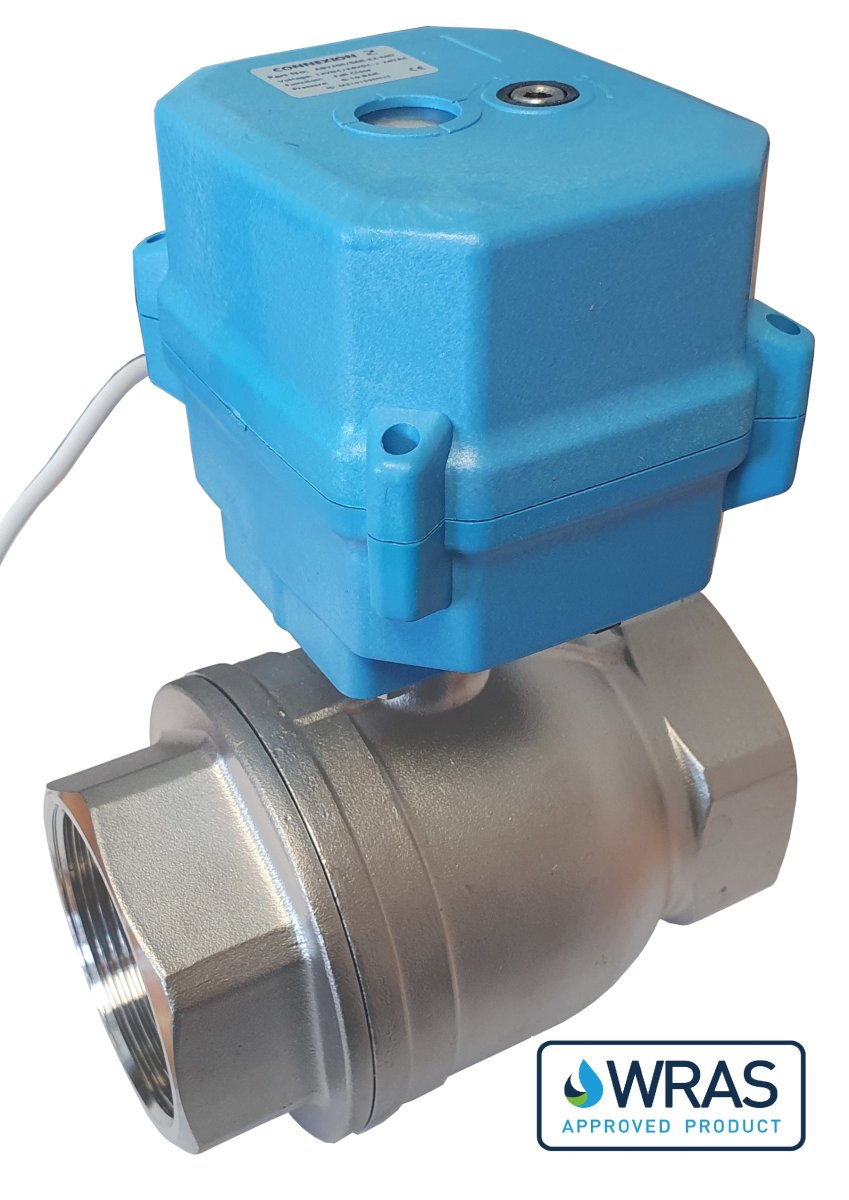Priority Demand Valves for Fire Sprinkler Systems | Solenoid-Valve.World
When fire breaks out, your sprinkler system must perform at maximum capacity. Shared water lines with other water dependant systems risk lowering pressure and compromising fire safety.
Our range of Brass solenoid valves and motor‑actuated ball valves, specially selected for priority demand systems, guarantee that firefighting water flow takes precedence when it matters most.
What is a Priority Demand Valve (PDV)?
The Challenge in Combined Water Systems
In buildings where sprinkler systems share water supply, everyday water usage like kitchens, toilets, machine cooling and cleaning systems can inadvertently reduce available pressure to sprinklers during an emergency.
Valve-Based Solution for Fire Safety
A priority demand water valve automatically shuts off non essential water supply when the sprinkler system activates. This ensures maximum flow and pressure to fire sprinklers, stabilising system performance and safeguarding lives and property.
The Requirement.
BS9251 – the standard for ‘fire sprinkler systems for domestic and residential occupancies’ – states that if the mains water supply flow rate available to the fire sprinkler system is liable to be affected by domestic water usage (e.g. shower, washing machine etc), THEN a valve must be fitted to cut off supply for domestic use in the event of a sprinkler activation.
Our Product Range for Priority Demand Applications
Solenoid Valves – Fast, Reliable Control
WRAS approved solenoid valves: Ideal for potable water systems, compliant with UK regulations and safe for combined domestic/sprinkler installations from 1/2 15mm to 2 inch 50mm.
Available in brass or stainless steel variants, suitable for diverse environments and specifications.
Configurations: 2/2‑way normally closed (Failsafe closed), normally open (Failsafe open) and Latching bi-stable functionality allow for flexible prioritisation of sprinkler flow.
All supplied with solenoid coil and DIN43650 field mountable DIN connector, option for prewired connector available upon request - or see related items in the store.
WRAS Motor-Actuated Ball Valves – Precision Meets Priority
Failsafe, Power Open/Close and Modulating Control options streamline integration into fire‑protection set-ups, ensuring override and recovery functions are seamless.
Fast-acting, 2‑second WRAS‑approved motor actuated ball valves (ABV)—perfectly engineered for priority demand and water leak detection systems.
All motor actuated valves are supplied with 3 meter cable for this application. Maximum permissible cable length is 10 meters between valve and controller.
Key Benefits for Fire Sprinkler Prioritisation
Rapid response performance: Solenoid valves deliver near-instant cut-off of domestic supply, while motor-actuated valves activate in just seconds with minimal pressure loss.
Compliance-ready: WRAS certification reassures safety in potable water systems and alignment with UK standards.
Versatile materials, configurations & Voltage: Choose from options that match your project's operating conditions and design criteria.
BS 9251: Fire Sprinkler Systems for Domestic and Residential Premises
What is BS 9251?
BS 9251 is the British Standard that sets out the requirements for the design, installation, components, water supplies, backflow protection, commissioning, testing, and maintenance of fire sprinkler systems in domestic and residential premises.
It is specifically intended to provide life safety protection, ensuring sprinkler systems are reliable and effective when protecting people and property.
BS 9251 is applicable to:
Houses, flats, and apartments
Residential care premises
Residential parts of mixed-use buildings (where non-residential areas are covered under BS EN 12845)
Buildings up to four storeys or 18 m in height (with additional requirements for taller/high-risk premises)
Who Should Use BS 9251?
The standard is relevant to a wide range of professionals and stakeholders, including:
Architects and building engineers – to ensure fire safety is integrated at the design stage
Sprinkler designers, installers, and maintenance companies – to ensure compliance and reliability
Property owners and developers – to meet legal and safety obligations
Insurers and contractors – to reduce financial and liability risks
Fire safety and extinguishing companies – to integrate BS 9251 systems into broader safety strategies
Why is BS 9251 Important?
Installing a fire sprinkler system to BS 9251 standards offers multiple benefits:
Life safety: Reduces fire growth, heat, and smoke, giving occupants valuable time to escape.
Firefighter safety: Limits fire development, making search and rescue operations safer and more effective.
Property protection: Minimises fire damage and helps contain the spread of fire until the fire service arrives.
Environmental benefits: Sprinklers use up to 90% less water than traditional firefighting methods and reduce water pollution from fire suppression.
Adaptability: Provides guidance for system extensions, repairs, or modifications in existing residential sprinkler systems.
What Has Changed in BS 9251:2021?
The latest version, BS 9251:2021, supersedes the 2014 edition, with significant updates to reflect modern risks and building designs:
New fourth system category – specifically for residential buildings taller than 18 m and high-risk scenarios.
Alignment with national fire service operational guidance – ensuring systems account for access, response times, and higher risk profiles in tall buildings.
Increased resilience – recommendations for larger water supplies, duplicate pumps, and reliability enhancements.
Non-residential guidance – additional recommendations for protected buildings with mixed occupancy.
Fire service interaction – improved measures to support firefighter operations during an incident.
Summary
BS 9251:2021 is the essential standard for domestic and residential fire sprinkler systems in the UK. By adopting BS 9251-compliant systems, designers, builders, and property owners ensure:
Safer buildings for occupants
Reduced fire and water damage
Compliance with best practice and legal expectations
Enhanced resilience for high-rise and higher-risk properties
For those responsible for designing, installing, or maintaining fire sprinkler systems, BS 9251 is the benchmark standard for life safety and property protection in residential settings.
Recommended Valve Setup for Priority Demand Systems

| Application | Recommended Product Type | Why It Works |
|---|---|---|
| Small residential or light commercial building | WRAS solenoid valve (brass) | Compact, cost-effective, and instantly responsive |
| Larger installations or where flow modulation is needed | WRAS motor-actuated ABV ball valve | Fast actuation, robust control, tailor-made for priority demand systems |
1. Purpose of the Priority Demand Valve
A PDV automatically restricts or shuts off non-sprinkler domestic water demand when the fire sprinkler system activates.
This ensures the sprinklers receive sufficient flow and pressure, even if household fixtures are being used at the same time.
Required in many domestic/residential systems supplied from a shared incoming main.
2. Key Installation Principles
Location: Install the PDV on the incoming cold-water main, downstream of the mains stop tap, before any branches to domestic services.
Bypass: The domestic services should connect through the PDV, while the sprinkler connection bypasses it.
Activation: The valve is triggered by a flow switch or pressure drop when the sprinkler system operates.
3. Typical Installation Layout
1. Incoming mains enters the property → Stop tap → Double check valve (as required by local water regulations).
2. From this point, pipework splits.
>Fire sprinkler supply: Direct line (uninterrupted).
>Domestic supply: Routed through the PDV.
3. PDV operation:
In normal conditions: Allows water through to domestic outlets.
On sprinkler activation: PDV closes/restricts domestic line, prioritising sprinkler flow.
4. Installation Steps
Shut off water supply and drain down the system.
Identify the main supply pipe immediately after the incoming stop tap and back flow prevention device.
Install a T-connection:
One leg to the sprinkler system (unrestricted). One leg to the PDV (serving the domestic water system).
Fit the PDV according to manufacturer instructions (orientation and flow direction are critical).
Reconnect domestic supply downstream of the PDV.
Check settings/commissioning:
Ensure the PDV activates at the correct pressure/flow.
Test both domestic supply and sprinkler priority function.
Label the installation: Clearly identify sprinkler supply, PDV, and isolation points.
5. Compliance & Best Practice
Follow manufacturer’s installation guide – each PDV may have specific requirements.
Check local regulations – in the UK, installations must comply with BS 9251 (sprinklers) and Water Supply (Water Fittings) Regulations.
Access: Ensure the PDV is accessible for inspection, testing, and maintenance.
Testing: Regular functional testing should be part of the sprinkler system maintenance plan.
Summary
Priority demand water valves are essential for maintaining water pressure in fire sprinkler systems shared with domestic supply.
Our WRAS solenoid valves and WRAS motor-actuated ball valves are tailored for rapid, reliable prioritisation.
Flexible materials and valve types ensure compatibility across diverse systems.
Easy installation and trust in compliance make your fire safety system robust and effective.
View our Priority Demand Solenoid Valves.
Priority Demand 2/2 Normally Closed (Failsafe Closed - Power to Open)
Accessories


